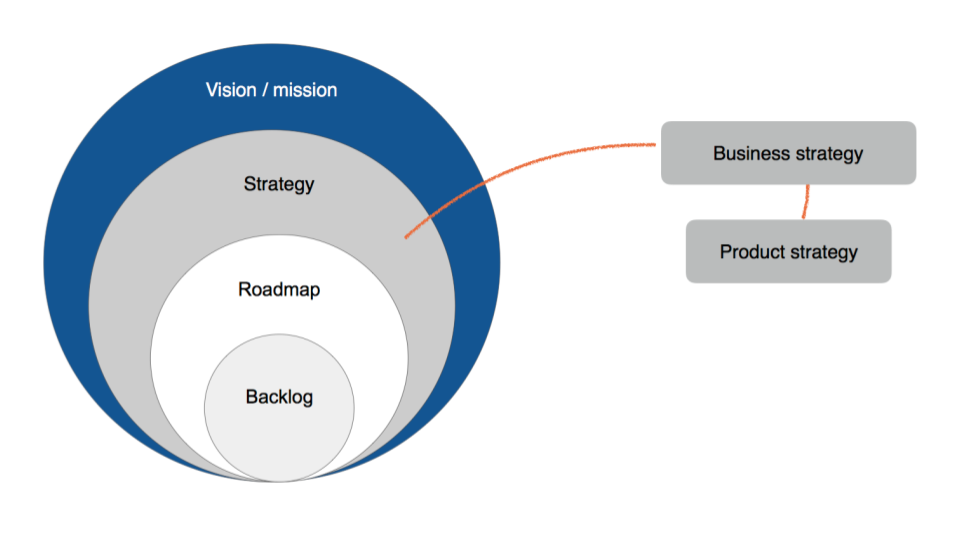Branding is the professional term for building the reputation of a business. Branding using digital channels is called digital branding. Any business has the potential to grow revenue and reputation cost-effectively using digital media. The entire digital branding industry is expected to grow INR: 71+ Thousand Crore ($8.6 billion) within 2030.
To learn, and apply branding, we are sharing meanings, definitions of branding, branding strategies with examples, differences and similarities of digital branding vs marketing, and tips to win the market using digital branding.
What is Digital Branding?
Branding is building a reputation based on offers, goals, and visions of a business. Digital branding is establishing a reputation online in the eyes of online users for a company. Online branding helps to build a positive perception of a business’s service, product, and culture.
An effective digital branding includes showing trustworthy stories of community interaction, customer feedback, Opinions, and growth of overall business.
“The key to successful digital branding is storytelling that connects emotionally with your target audience, making your brand unforgettable.” -Seth Godin (Worldwide Marketing Expert, 15+ NY Times Best Selling Author)
The benefits of digital branding are immense in increasing the likelihood of marketing, and sales outcomes. Digital branding positively enhances the profitability of marketing and sales due to the establishment of authority and trust. To practice and benefit from digital branding we are sharing 10 Digital Branding Strategies and steps to apply the digital branding component in your branding campaign.
Let’s put these things together and simplify them; we can replace ‘digital branding’ with ‘digital communication’. It has been proven that digital branding strategies in the field of marketing have been really effective in terms of results.
10 Digital Branding Strategies With Examples
Explore digital branding solutions and strategies with actionable tips and examples from the 10 tips below.
1. Get Clear on Brand Vision, Values, and Purposes
A clear brand vision, values, and purpose are essential for effective digital branding. They provide the foundation upon which all branding decisions are made. When defining these brand elements, focus on what your brand stands for and how it differentiates from competitors. A strong vision guides the brand’s direction, while core values ensure consistency in communication and actions. With a clear and prominent brand vision and values the brand purpose gets clear.
An example of brand vision and values development is Tesla (EV Brand). Tesla’s brand vision centers on accelerating the world’s transition to sustainable energy. It drives all their marketing strategies and branding efforts.
2. Develop A Brand Promise and Offer
Business and brand building is fundamentally making promises and keeping promises. A brand promise defines the value that customers can expect from your brand. This promise should be consistently delivered through every customer interaction. Developing a clear offer aligned with your brand promise ensures Credibility, capacity, and authority. The audience and consumers know exactly what to expect, thereby building trust and loyalty.
To learn brand promises and offer creation observe the example of Apple.Inc. Apple promises innovation and user-friendly technology, consistently delivering on this promise with every product launch and marketing campaign.
3. Visualize Brand Identity
A Brand identity encompasses the visual elements that represent your brand, such as logos, color schemes, and typography. Visualizing your brand identity helps create a memorable impression in the minds of your audience. A strong brand identity is critical for recognition and differentiation in a crowded market. The visualization of a brand is all about creating a persona and perception in the eyes of consumers.
Take a look at Coca-Cola as an example of brand identity. Coca-Cola’s iconic red and white logo and classic font have created a universally recognizable brand identity. It is consistently used across all marketing platforms, promotions, and products.
4. Be Clear on Brand Voice
Your brand voice is the personality and tone used in all communications. The Voice of a brand should align with your brand values and appeal to your target audience. A consistent brand voice builds familiarity and trust, making your brand more relatable and credible. The brand voice must reflected in all forms of communication: non-verbal, and verbal (Tonality, words, images, and stories). Clarity on brand voice makes marketing campaigns effective and consistent.
Nike’s brand voice is motivational and empowering, perfectly aligning with its message of inspiring athletes to “Just Do It.”
5. Be Strategic on Brand Logo, Name, Tagline
Your logo, name, and tagline are the most visible aspects of your brand. Being strategic about these elements ensures that they convey the essence of your brand and are easily memorable. A well-designed logo and a catchy tagline can significantly enhance brand recognition and recall. The brand colors, logo, brand name, and tagline create and shape the brand identity.
Logos and Names of brands must be short, precise, and easy to remember. Notice how simple but recognizable logos and colors of Apple, Microsoft, and Nike stand out from the market.
McDonald’s golden arches and the tagline “I’m Lovin’ It” are instantly recognizable and evoke positive emotions associated with the brand.
6. Understand and Shape Brand Position
Brand positioning is about carving out a unique space in the market that differentiates your brand from competitors. This involves understanding your target audience’s needs and aligning your brand’s offerings to meet those needs. Effective positioning can lead to a strong competitive advantage. To stand out and increase overall business growth, constantly focus on KPIs of marketing, sales, and branding campaigns. Analyze offers and consumer feedback to make a better position in the market.
As a brand, Amazon positions itself as the most customer-centric company, focusing on convenience, variety, and competitive pricing, making it the go-to platform for online shopping.
7. Capture and Promote Brand Stories
Brand stories are narratives that highlight your brand’s journey, mission, and values. Sharing these stories helps humanize your brand and build an emotional connection with your audience. Well-crafted stories can be powerful tools for engagement and loyalty. Stories of personal or business brands are captivating. Stories make a brand distinct and well-connected to consumers. Storytelling in brand building and marketing is one of the most effective practices.
To learn brand storytelling, consider checking Patagonia shares stories about environmental activism and sustainable practices. It aligns with its brand values and resonates with eco-conscious consumers.
8. Focus on Consistent Brand Design and Colors
Consistency in design and color usage reinforces brand identity and ensures that your brand is instantly recognizable. Whether it’s your website, social media profiles, or marketing materials, maintaining a consistent design language is key to building a strong brand presence. Brand designing is more the creation of a logo and tagline. Consistency in brand design means patterns in the representation of visual and textual elements.
An Example of consistent brand design is IKEA. IKEA consistently uses blue and yellow across all its branding materials, from store signage to online content, creating a cohesive and easily recognizable brand.
9. Set Brand Culture and Community
Brand culture refers to the shared values, beliefs, and behaviors within an organization. Brand community refers to the customers and supporters who interact with the brand. Building a strong brand culture and fostering a community can lead to greater customer loyalty and advocacy. A brand has 2 main engines to move forward: The first engine is the sales engine to acquire customers and the second is the talent engine to attract talents and professionals. The advantage of building a brand culture is to attract quality customers and professionals to a brand ecosystem.
Starbucks has built a culture of inclusivity and a community of coffee lovers who feel connected through the brand’s commitment to quality and customer experience.
10. Make Branding Relevant with Marketing and Sales
Effective branding should be integrated into all marketing and sales efforts to create a seamless customer experience. Branding helps in differentiating products and services, making them more appealing to potential customers. Ensuring that branding aligns with marketing and sales strategies can lead to increased customer trust and sales. When products or services, offers, and stories are aligned with each other trust is built.
Salesforce integrates its branding into all marketing and sales initiatives, emphasizing its commitment to customer success and innovation, which has helped it become a leader in the CRM market.
Difference Between Digital Branding Vs Digital Marketing
Digital Branding is not an alternative to digital marketing. Let’s discuss the differences and similarities between digital branding and digital marketing:
In the table below, we are comparing digital branding and digital marketing based on- definitions, goals, operations, outcomes, and durations.
| Aspect | Digital Branding | Digital Marketing |
|---|---|---|
| Definition | The process of creating and establishing a brand’s identity in the digital world. | The practice of promoting and selling products or services using digital channels. |
| Goals | Building brand recognition, trust, and loyalty. | Driving sales, generating leads, and increasing conversions. |
| Operations | Content creation, storytelling, social media presence, brand voice development. | PPC campaigns, SEO, content marketing, email marketing, and social media ads. |
| Outcomes | Long-term brand awareness and customer loyalty. | Immediate sales, lead generation, and ROI tracking. |
| Duration | Ongoing, long-term focus. | Campaign-based, short to medium-term focus. |
Similarities Between Digital Branding And Digital Marketing
In the table below, we are connecting digital branding and digital marketing similarities based on-
| Aspect | Similarity |
|---|---|
| Audience Focus | Both aim to understand and target specific audiences effectively. |
| Content Strategy | Both rely on a well-planned content strategy to engage and convert users. |
| Use of Digital Channels | Both utilize digital platforms like social media, websites, and email to achieve their goals. |
| Data-Driven | Both leverage data analytics to optimize and refine strategies. |
| Customer Engagement | Both focus on building and maintaining customer relationships through digital interactions. |
How To Choose Your Digital Branding Market
1. Your Target Markets

You will have to figure out the answer to a few basic questions about your target markets like where they are, how big/small they are, and what are their chances of growth.
You will have to make sure that you know the answer to such questions about your target market and then only you can implement digital branding solutions for your business.
2. Requirements Of Customer
The next big factor is that you will have to find out the needs of your customers, what do they actually require?
Unless and until you know the expectations of your customer you can never implement any internet marketing strategies correctly. You will have to figure out how the targeted markets are segmented.
To segment the targeted market, focus on-
- Specific Needs
- Age
- Location
- Profession
- Likes and Dislikes
- Problems and Pains
- Goals and Visions
- Ambition and Fantasies
3. Differentiation

This factor actually means that you will have to figure out to what extent your business needs differentiation in terms of its products and services.
You will have to understand the need to differentiate products and services in order to influence your customers.
Since these are the basic questions in your online marketing journey, unless and until you are clear with them, you can’t expect digital branding to do wonders for your business.
If you are clear with these questions you can expect your brand to grow in the long term.
While focusing on the brand’s promotion you should actually try to look for long-term goals rather than short-term. These factors will actually decide the direction of your business and what will be the essential elements of your business and about resource allocation and a number of other basic kinds of stuff.
What are key Digital Branding Strategies?
To win in digital branding, focus on key strategies:
- Compelling Brand Story: Ensure your brand’s story resonates with your audience and leaves a lasting impact.
- Aligned Activities: Make sure your branding activities are consistent and effective.
- Measure Effectiveness: Identify factors that measure the success of your branding efforts.
- Check Your Direction: Regularly assess branding strategies for leading to market success.
Below a 10 key steps for running optimized digital branding campaigns. Consistent application of the branding strategies below increases the strength, and prominence of reputation online.

Effective Digital Communication:
Digital communication is essential for brand growth. It builds trust, enhances transparency, and allows you to share valuable content. Digital branding supports amplifies, and builds a strong brand platform.
Consumer-Centric Approach:
Always put the customer at the center of your branding strategy. Focus on delivering a great brand experience through the right channels and messaging. This approach enhances user experience and drives brand growth.
The consumer-centric approach is evident in online reputation management. It helps build a brand and develop your business.
Eventually, whatever you do, your targeted customers will decide if your brand is going to propel or not hence focus on them and target mainly on them.
Final Words
Digital branding is a great medium to promote your business.
Focus on user experience and building trust. Learning digital marketing can further enhance your skills in this area.
Branding is all about building a brand persona in the eyes of consumers. Paying attention to the digital branding steps and strategies helps to make a clear action template. Practicing branding strategies gradually builds the perception.
Merging branding and marketing is an undefeatable way to build and spread awareness with revenue.
Joining Digital Marketing Course will empower you to learn and master Digital Branding to optimize your brand presence in an emphatic and sales were driven fashion.
Want to know how digital branding can help your business? Share your business details in the comments and our experts will guide you in the process.









It is basically a very effective and helpfull in building brands and enhancing our knowledge.